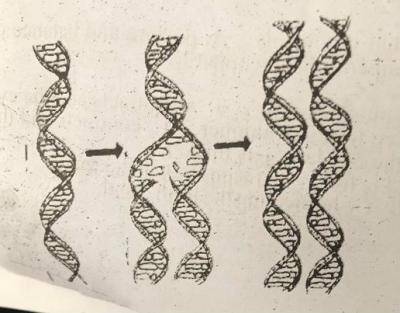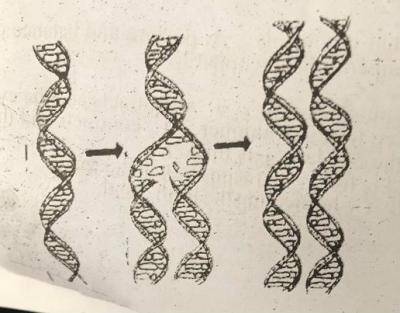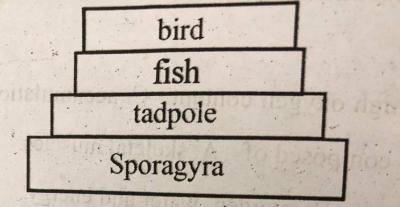Study Specimens Y, amd Q and answer questions 4(a) to 4(e).
(a)(i) State the sex of specimen P.
(ii) Give one reason tor the answer in 4(a).
(b)(i) Name the habitats of each of specimens P and Q (ii) State three adaptations each of specimens P and Q to their habitats. (c)(i) State one observable structural differences between specimens (ii) State three observable structural similarities between P and Q. (d)(i) Observe the mouthpart of specimen Q and state its feeding mechanism.
(ii) List one food which specimen Q feeds on.
(e) Remove carefully one of the legs on the right side of the metathorax of specimen P. Make a drawing, 6 cm to 8 cm long of the removed leg and label fully.
Study specimens H and J and answer questions 2(a) to 2(d).
(a)i) Name the Kingdom and Class of organisms from which specimen H could be obtained.
(ii) Name the specific location on the body of the organism from which specimen H could be obtained.
(iii) Name one example of organism from which specimen H could be obtained.
(bi) State six observable structural differences between specimens H and J.
| H | J |
(c) State one function each of specimens H and J to the organisms that possess them. H:(ii) State three observable structural similarities between specimens H and J.
(d) Mention: (i) three observable features that adapt specimen H to the function stated against it in 2(c);
(i) two observable features that adapt specimen J to the function stated against it in 2(c).
Study specimens A, B, C, E and F and answer questions 1(a) to 1(e).
(a) Name one branch of Biology D which involves the use ot specimens A, B, C, D, E and F. (b) State one function of each of Specimens A. B. C D E and F:
(c) Describe briefly how each of specimens B and D could be used.
(d) make a drawing, 10 cm to 12 cm long of specimen D and label fully.
(e) Name two organisms each associated with the use ot specimens D and F.
The biological importance of the dance by the worker honeybee is that it___________
- A. acts as a signal for mating
- B. serves as a warning signal
- C. signals the availability of food
- D. serves as a means of identifying members of the caste
The yellow and black stripes on the body of wasps is an example of________
- A. mimicry
- B. courtship behaviour
- C. camouflage
- D. warning colouration
The cross between RrTt and rrtt where R is a gene for red colour and T for tallness will result in______
- A. all the offspring being tall with red fruits
- B. 25 % tall with red fruits
- C. 50 % tall with red fruits
- D. 75 % tall with red fruits
A man whose blood group is heterozygous B is married to a woman whose blood up is also heterozygous B
Which of the following statements is correct about the blood group of their four offspring?
- A. Three of them belong to blood group B
- B. Three of them belong to blood group O
- C. None of them belongs to blood group O
- D. Two of them belong to blood group B
In a complete dominance monohybrid cross between a pure breeding yellow-flowered plant Y and a pure breeding white-flowered plant y, the result of the first filial generation is _________
- A. 50 % yellow flowers
- B. 75% yellow flowers
- C. all yellow flowers
- D. all white flowers
Which of the following nucleotides is not found in the DNA molecules?
- A. Adenine
- B. Cytosine
- C. Guanine
- D. Uracil

The process is called_______
- A. replication
- B. cell maturation
- C. crossing over
- D. mutation

The diagram above is an illustration of a process occurring in a living animal cell. Study it and answer this question
The process occurs in the _______
- A. Nucleus
- B. Mitochondrion
- C. Golgi body
- D. Cytoplasm
Individuals with blood group AB can donate blood to individuals with blood group(s)___________?
- A. A and B
- B. A and O
- C. AB only
- D. O only
Which of the following factors is not a source of variation in living organisms?
- A. Environment
- B. Inheritance
- C. Mitosis
- D. Meiosis
Which of the following roles is not performed by a government agency responsible for forest maintenance?
- A. Regulating the harvest of timber and poaching
- B. Creating, protecting and managing the forest reserves
- C. Tracking the movement of timber, wood, and wildlife
- D. Regulating mining activities in the forest
Which of the following resources is renewable?
- A. Petroleum
- B. Coal
- C. Iron
- D. Trees
Maize grains are best stored against insect attacks by__________________
- A. keeping in a silo
- B. storing in the room
- C. leaving them on their cobs
- D. covering with leaves
Tall trees with unbranched trunks which grow above the upper storey of the forest are commonly referred to as _____
- A. Emergents
- B. Herbs
- C. Lianes
- D. Shrubs

In the pyramid of energy illustrated above, the organism with the least amount of transferred energy is___________
- A. Spirogyra
- B. Tadpole
- C. Fish
- D. Bird
Organisms in an ecosystem are usually grouped according to their trophic level into__________
- A. carnivores and omnívores,
- B. consumers and parasites
- C. producers, and saprophytes
- D. Producers and consumers
Which of the following soil fertility improvement methods will have the most negative effect on the ecosystem if not controlled?
- A. Application of N-P-K fertilizer
- B. Shifting cultivation
- C. Mixed farming
- D. Crop rotation


